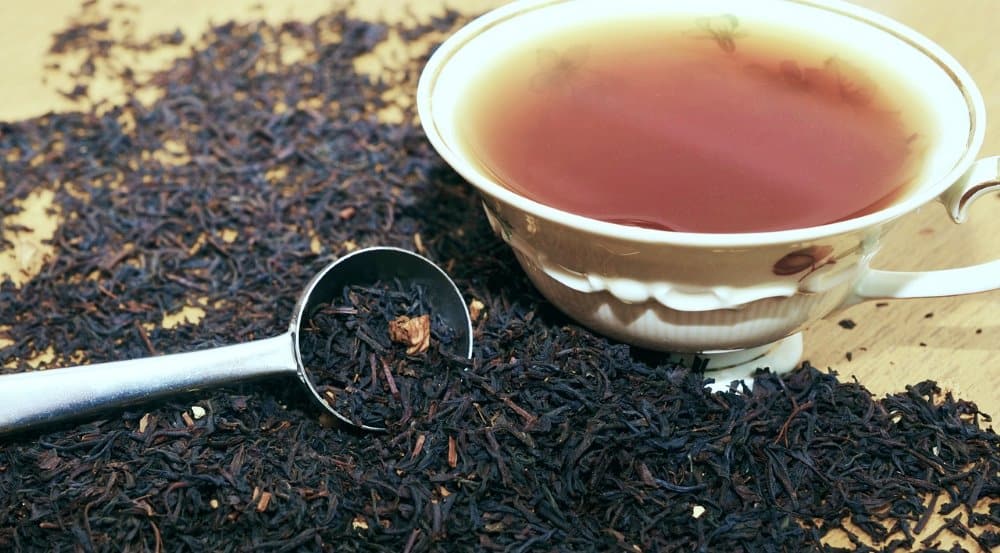Hast du dich schon immer gefragt, welche „sekundären Pflanzenstoffe“ es gibt, was (Poly-)Phenole sind und zu welcher Klasse z. B. die Sekundärstoffe des Grüntees gehören? Wir haben hier eine passende Übersicht für dich gebaut.
Zweifelsfrei: Es gibt eine wahnsinnige Stoff-Diversität und -Fülle, weswegen wir sicher nur einen Bruchteil der Stoffe „eingefangen“ haben.
Bitte: Wenn sich jemand von euch super auskennt und Ergänzungen weiß, kann und soll er sich gerne bei uns melden, sodass wir die Liste komplettieren können.
1. Carotinoide
- alpha-Carotin
- beta-Carotin
- ß-Cryptoxanthin
- Lutein
- Zeaxanthin
- Astaxanthin
- Lykopen
- Fucoxanthin
2. Phenole
2. 1. Phenolsäuren
2. 1. 1. Hydroxybenzoesäuren
- Gallussäure
- Protocatechusäure
- Vanillinsäure
- Syringasäure
2. 1. 2. Hydroxyzimtsäuren
- Cumarinsäure
- Kaffeesäure
- Ferulasäure
- Sinapinsäure
2. 2. Flavonoide
2. 2. 1. Flavonole
- Quercetin
- Kaempferol
- Myricetin
- Galangin
- Fisetin
2. 2. 2. Flavone
- Apigenin
- Chrysin
- Luteolin
2. 2. 3. Flavanole (Catechine)
- Catechin
- Epicatechin
- Epigallocatechin (EGC)
- Epicatechingallat (ECG)
- Epigallocatechingallat (EGCG)
2. 2. 4. Flavanone
- Eriodictyol
- Hesperidin
- Hesperetin
- Naringenin
- Naringin
2. 2. 5. Anthocyanidine
- Cyanidin
- Pelargonidin
- Delphinidin
- Peonidin
- Malvidin
2. 2. 6. Isoflavonoide
- Genistein
- Daidzein
- Glycitein
- Formononetin
2. 3. Stilbene
2. 4. Cumarine
2. 5. Tannine
2. 5. 1. Ellagitannine
2. 5. 1. 1. Granatapfel-Ellagitannine
- Punicalagin
- Punicalin
2. 6. Saponine
3. Alkaloide
3. 1. Xanthine
- Koffein
- Theophyllin
- Theobromin
4. Stickstoffhaltige Substanzen
5. Schwefelhaltige Substanzen
- Isothiocyanate
- Indole

7 comments On Sekundäre Pflanzenstoffe auf einen Blick
Rutin könnte man ggf. bei den Flavonen noch ergänzen, eine Art Derivat vom Quercetin nach Sex mit dem Zweifachzucker Rutinose ;-)
Glucosinolate / Senfölglycoside als Übergruppe der Indole evtl. noch erwähnenswert.
Beste Grüsse!
Hallo Chris,
das sprengt wahrscheinlich absolut den Rahmen, aber fragen kostet ja nichts :-P
Wär das möglich je 1-2 Sätze daneben zu schreiben, was es ist und was es bewirkt? (ganz grob)?
Also z.B. Beta-Carotin: Vorstufe von Vit A, wird jedoch nur unzureichend umgewandelt. Wichtig für Augen, xx, xx.
Das wäre dann so nach und nach eine kleine Wissensdatenbank zu dem Thema :)
In jedem Fall danke für die Auflistung :)
LG,
Antje
Hi Antje,
ja, gute Idee :-) Daran habe ich auch schon gedacht, eine kleine Datenbank aufbauen …
Das Problem ist nur, dass das sehr zeit- und arbeitsintensiv ist und ich alleine das nicht bewerkstelligen kann und will. Aber wie im Artikel geschrieben: Gerne können Leser mir Infos zuschicken und ich baue sie ein.
LG, Chris
2.6 Saponine:
https://de.wikipedia.org/wiki/Saponine
ist drin :-)
Bei der Frage wieviel von was in Nahrung enthalten ist leistet einem der Phenol-Explorer
unschätzbare Hilfe wie ich finde.
http://phenol-explorer.eu/compounds
Phenol-Explorer is the first comprehensive database on polyphenol content in foods.
The database contains more than 35,000 content values for 500 different
polyphenols in over 400 foods. These data are derived from the
systematic collection of more than 60,000 original content values found
in more than 1,300 scientific publications. Each of these publications
has been critically evaluated before inclusion in the database. The
whole data on the polyphenol composition of foods is available for
download.
Release 2.0 of Phenol-Explorer added comprehensive data on polyphenol metabolism.
Pharmacokinetic data on 380 metabolites identified in biofluids after
the consumption of polyphenol-rich sources are presented. These data
have been extracted from 236 publications and originate from 221
intervention studies in human subjects and experimental animals.
Release 3.0 of Phenol-Explorer introduces data on the effects of food processing and cooking.
Retention factors describe changes in polyphenol content upon food
transformation and can be used to estimate composition of processed
foods when laboratory measurements are missing and the data are absent
from food composition tables. Retention factors are available for 155
foods, 139 polyphenols, and 35 processes. They are derived from 129
publications.
A wide range of queries on foods, polyphenols and
metabolites, as identified by various analytical methods, can be
executed. Simple queries can be made by typing the name of a polyphenol,
metabolite or food source at the top of any page. More complex queries
can be performed by using the Advanced search. In this search, two or
more foods or polyphenols can be selected, to easily compare for example
the contents of the various polyphenols in green and black tea. Using
the ‚Advanced display option‘ it is also possible to sort results as
desired and to calculate total polyphenol contents per class and
subclass.
Phenol-Explorer has been developed at INRA in collaboration with AFSSA, the University of Alberta, the University of Barcelona, IARC and In Siliflo.
The work has been made possible thanks to the financial support of the
French government, the Institut National du Cancer (France), Unilever,
Danone and Nestlé.
We wish you a fruitful polyphenol exploration!
Super!
Vielen Dank für den Link, das kannte ich nicht und finde es eine überaus gewinnbringende Bereicherung!
Herzlichen Dank!